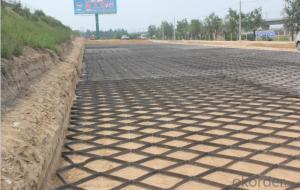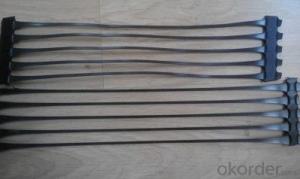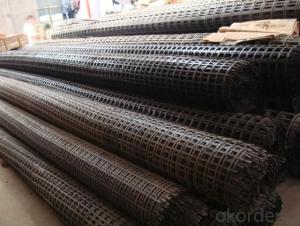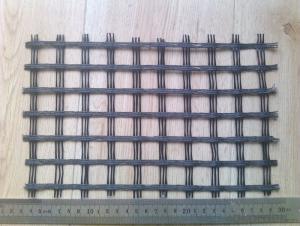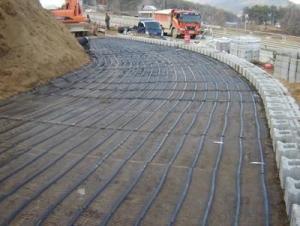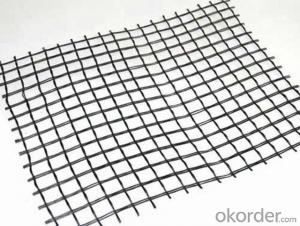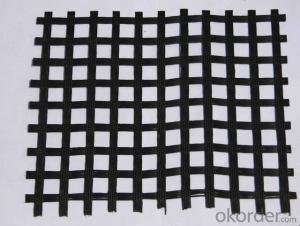Fiberglass Geogrids for Roadbed Reinforcement
- Loading Port:
- Qingdao
- Payment Terms:
- TT OR LC
- Min Order Qty:
- 30000 m²
- Supply Capability:
- 100000 m²/month
OKorder Service Pledge
OKorder Financial Service
You Might Also Like
Structure of Fiberglass Geogrid
Fiberglass geogrid is a kind of new favorable earthwork base material to strengthen the road surface and roadbed. This product is made by weaving and covering fiberglass filament. It is featured by high vertical and horizontal tensile strength, low unit extension, high flexibility, and favorable high and low temperature resistance. The products after surface covering own the favorable property of alkali resistance and aging resistance
Main Features of the Fiberglass Geogrid
Reinforcement fiberglss geogrid
made of fiberglass,glassfiber
fiber glass mesh
Packaging & Delivery
| Packaging Details: | PP bags or PE film. Or Packed as customers' requests. |
| Delivery Detail: | 10-20days after the contract is effective |
Fiberglass Images
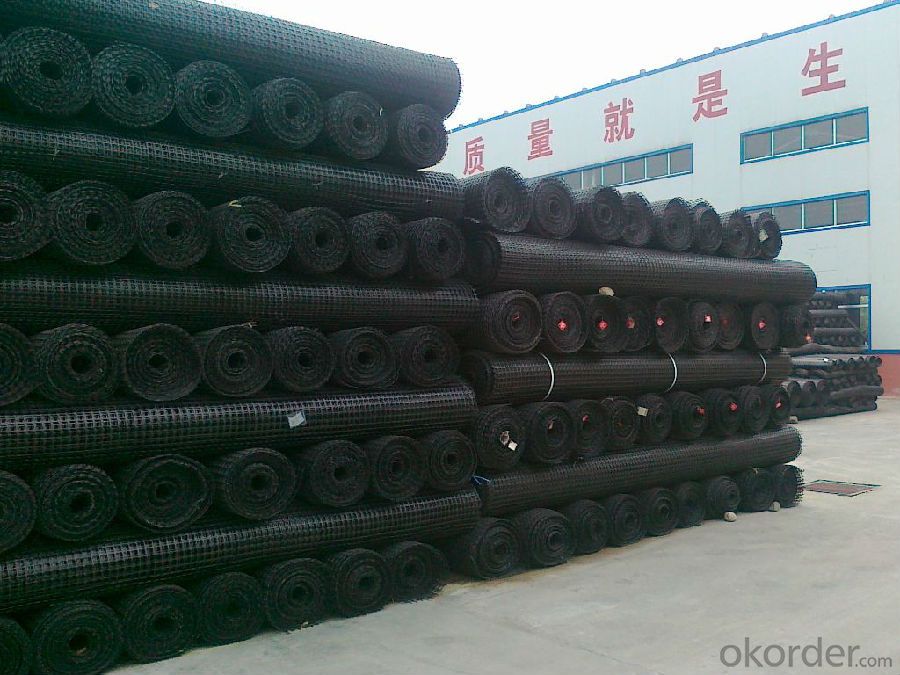

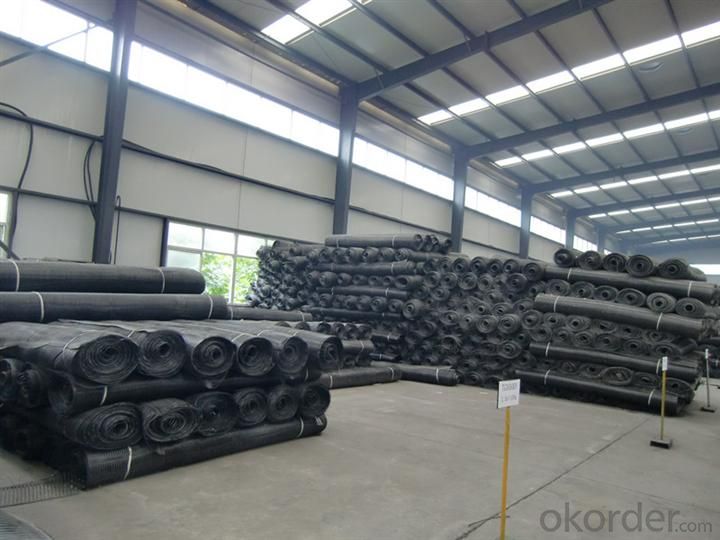
Fiberglass Geogrid Specification
Property | Test Method | TGSB 30-30 | TGSB 40-40 | TGSB 50-50 | TGSB 60-60 | |
Ultimate tensile strength(1) (kN/m) | MD |
EN ISO 10139
| 30 | 40 | 50 | 60 |
CD | 30 | 40 | 50 | 60 | ||
Elongation at maximum load (%) | MD | 3 | ||||
CD | 3 | |||||
Approximate mesh size(mm) | 12.7×12.7 25.4×25.4 40×40 | |||||
Roll Width (m) | 1-6 | |||||
Roll Length(m) | 50-200 | |||||
Property | Test Method | TGSB 60-60 | TGSB 70-70 | TGSB 80-80 | TGSB 90-90 | |
Ultimate tensile strength(1) (kN/m) | MD |
EN ISO 10139
| 60 | 70 | 80 | 90 |
CD | 60 | 70 | 80 | 90 | ||
Elongation at maximum load (%) | MD | 3 | ||||
CD | 3 | |||||
Approximate mesh size(mm) | 12.7×12.7 25.4×25.4 40×40 | |||||
Roll Width (m) | 1-6 | |||||
Roll Length(m) | 50-200 | |||||
Property | Test Method | TGSB 100-100 | TGSB 120-120 | TGSB 130-130 | TGSB 150-150 | |
Ultimate tensile strength(1) (kN/m) | MD |
EN ISO 10139
| 100 | 120 | 130 | 150 |
CD | 100 | 120 | 130 | 150 | ||
Elongation at maximum load (%) | MD | 13 | ||||
CD | 13 | |||||
Approximate mesh size(mm) | 12.7×12.7 25.4×25.4 40×40 | |||||
Roll Width (m) | 1-6 | |||||
Roll Length(m) | 50-200 | |||||
FAQ
We have organized several common questions for our clients,may help you sincerely:
Q: How about your company?
A:Our company are one of the largest geosynthetic products supplier in the world.We have the products experience more than 20 years.Already export to USA/Germeny/Australia/Zambia/Brazil etc.more than 20 countries.Almost 10years.Our products including Geocell/Fiberglass Geogrid/Geomembrane/Geotextile/Geonet etc.
Q.Does your products have good qualitity?
A:Yes,we have do many big projects such as the 2008 Beijing Olympic BIRD NEST. Divert water from the south to the north project. And our products have CE certificate also.
Q:How long can we receive the products after purchase?
A:In the purchase of product within three working days, We will arrange the factory delivery as soon as possible. The pecific time of receiving is related to the state and position of customers.Commonly 15-20 working days can be delivery.
- Q:What is the typical geogrid roll thickness for specific applications?
- The typical geogrid roll thickness for specific applications can vary depending on the specific project requirements and the type of geogrid being used. However, in general, geogrid roll thicknesses range from 0.5 mm to 3 mm.
- Q:What is the meaning of reinforced subgrade? Is there a geogrid type on the road?
- Yes. But not necessarily the design of geogrid.
- Q:How do geogrids improve the performance of geotextile tubes?
- Geogrids improve the performance of geotextile tubes by providing additional structural support, enhancing stability, and increasing tensile strength. They help to prevent stretching and deformation of the geotextile material, thereby maintaining the shape and integrity of the tubes. This reinforcement helps to withstand the forces exerted by water, soil, and other external factors, making geotextile tubes more durable and effective in applications such as erosion control, shoreline protection, and environmental containment.
- Q:Do geogrids affect the permeability of soil?
- Yes, geogrids can affect the permeability of soil. Geogrids are commonly used as reinforcement materials in civil engineering projects to improve the stability and load-bearing capacity of soils. By distributing the applied loads over a larger area, geogrids reduce the pressure on the soil particles, which can minimize soil compaction and increase the void space within the soil. This can enhance the permeability of the soil, allowing water to flow more freely through it. Therefore, geogrids can have a positive impact on the permeability of soil.
- Q:Can geogrids be used in bridge abutments?
- Yes, geogrids can be used in bridge abutments. Geogrids are commonly used in soil stabilization and reinforcement applications, and they can be effectively used to improve the stability and strength of bridge abutments. By installing geogrids in the soil surrounding the abutments, the geogrids can distribute loads more evenly, prevent soil erosion, and provide additional support to the bridge structure.
- Q:Are geogrids effective in preventing soil erosion on slopes without vegetation?
- Yes, geogrids are effective in preventing soil erosion on slopes without vegetation. Geogrids are synthetic materials that are designed to reinforce and stabilize soil, providing structural support to prevent erosion. They are commonly used in areas where vegetation is not present or cannot be established, such as construction sites or steep slopes. Geogrids improve soil stability, distribute load forces, and enhance water drainage, effectively reducing soil erosion.
- Q:What are the different installation methods for geogrids?
- There are several installation methods for geogrids, including direct placement, trenching and backfilling, and mechanical installation. Direct placement involves laying the geogrid directly on the subgrade or soil surface and then covering it with a layer of aggregate. Trenching and backfilling method involves excavating a trench, placing the geogrid in the trench, and then backfilling it with soil or aggregate. Mechanical installation methods use specialized equipment, such as a geogrid installation machine, to unroll and place the geogrid in the desired location. The chosen installation method depends on factors such as the application, site conditions, and specific project requirements.
- Q:Are geogrids resistant to microbial attack?
- Yes, geogrids are generally resistant to microbial attack. Their construction materials, such as polyester or polypropylene, are not easily degraded by microorganisms, making geogrids a durable and long-lasting solution in various applications.
- Q:Are geogrids suitable for use in high-traffic areas?
- Yes, geogrids are suitable for use in high-traffic areas. Geogrids are highly durable and have a high tensile strength, making them ideal for reinforcing and stabilizing soils in areas with heavy vehicle or pedestrian traffic. They can effectively distribute loads and reduce soil movement, ensuring long-term stability and preventing damage to the paved surfaces.
- Q:Can geogrids be used in seismic zones?
- Yes, geogrids can be used in seismic zones. Geogrids are commonly used in geotechnical engineering to reinforce soils and provide stability to structures. They can also help mitigate the effects of earthquakes by distributing the seismic forces and reducing soil liquefaction. However, specific design considerations and geogrid properties should be taken into account to ensure their effectiveness in seismic zones.
1. Manufacturer Overview |
|
|---|---|
| Location | |
| Year Established | |
| Annual Output Value | |
| Main Markets | |
| Company Certifications | |
2. Manufacturer Certificates |
|
|---|---|
| a) Certification Name | |
| Range | |
| Reference | |
| Validity Period | |
3. Manufacturer Capability |
|
|---|---|
| a)Trade Capacity | |
| Nearest Port | |
| Export Percentage | |
| No.of Employees in Trade Department | |
| Language Spoken: | |
| b)Factory Information | |
| Factory Size: | |
| No. of Production Lines | |
| Contract Manufacturing | |
| Product Price Range | |
Send your message to us
Fiberglass Geogrids for Roadbed Reinforcement
- Loading Port:
- Qingdao
- Payment Terms:
- TT OR LC
- Min Order Qty:
- 30000 m²
- Supply Capability:
- 100000 m²/month
OKorder Service Pledge
OKorder Financial Service
Similar products
New products
Hot products
Related keywords
